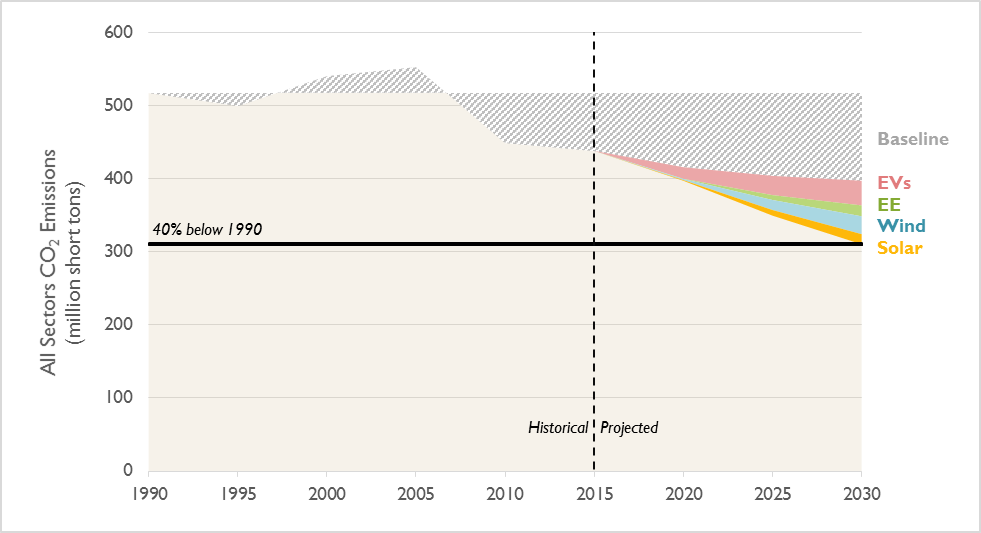Northeast States Can Use Cap-and-Trade Program and Other Strategies to Reduce Emissions and Save Billions of Dollars
Meeting the emission reduction goals of states within the Regional Greenhouse Gas Initiative (RGGI) will yield billions of dollars in savings and tens of thousands of new jobs each year for over a decade, according to a Synapse study released today. A more stringent RGGI cap, complemented by individual state renewable resource and efficiency standards, will help states achieve their climate goals, which cluster around a 40 percent reduction from 1990 emissions levels by 2030.
The nine states—Connecticut, Delaware, Maine, Maryland, Massachusetts, New Hampshire, New York, Rhode Island, and Vermont—have already lowered their total energy-related CO2 emissions 20 percent below 1990 levels by participating in the RGGI cap-and-trade program, first implemented in 2008. The current RGGI cap on electric-sector emissions shrinks from 91 million short tons in 2014 down to 78 million short tons in 2020, and stays constant thereafter. By lowering the RGGI cap even further—to 19 million short tons in 2030—and adding a new emission reduction measure in the transportation sector, Synapse found that the states can save a combined $5.2 billion from 2016 to 2030 and create 50,000 new jobs each year in the region.
Deeper emission reductions will require efforts in multiple sectors. While there are many potentially successful policies to reduce emissions in all sectors, Synapse’s analysis focused on four well-researched, cost-effective emission reduction measures: energy efficiency, wind and solar generation in the electric sector, and conversion from gas-powered to electric light-duty vehicles in the transportation sector. Using a purpose-built, multi-sector model of emissions in the RGGI states and the National Renewable Energy Laboratory’s Regional Energy Deployment System (ReEDS) model, Synapse analyzed the impacts of adding the following measures to the RGGI states’ existing goals:
- Converting one-third of all light-duty vehicles from gas to electric
- Achieving Massachusetts’ level of energy efficiency savings in all RGGI states
- Investing in onshore wind generation up to the economically achievable potential
- Limited investments in utility-scale solar installations
The relative share of each measure in achieving the increased emission reductions, which would total 40 percent reductions below 1990 levels, can be seen in the figure below. Synapse’s modeling suggests that these measures will yield net savings in terms of costs for each ton of emissions reduced.
